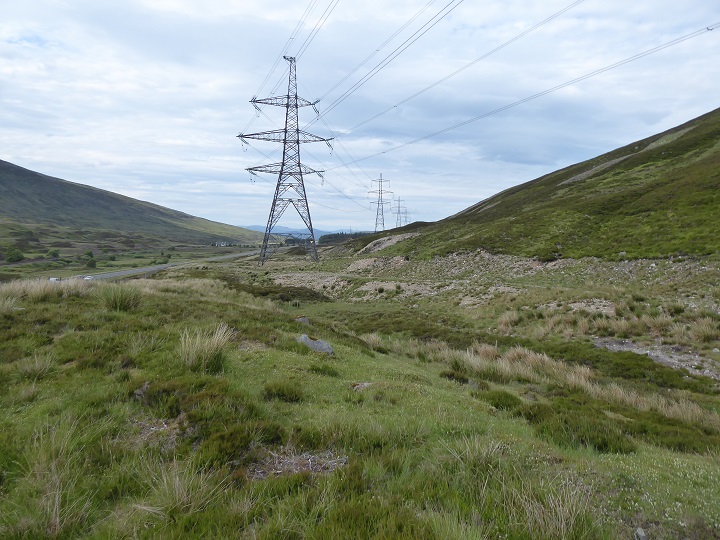
I had been wanting to take a look at SSE’s “trial restoration areas” for the Beauly Denny powerline at Drumochter for several years and eventually managed to do so on Friday. Unlike the landscape scar immediately south of Balsporran Cottages and north Drumochter Lodge (see here), which is clearly visible as one travels through the Drumochter, the trial restoration areas are mostly tucked out of sight above the A9 – albeit clearly visible from space (see here).
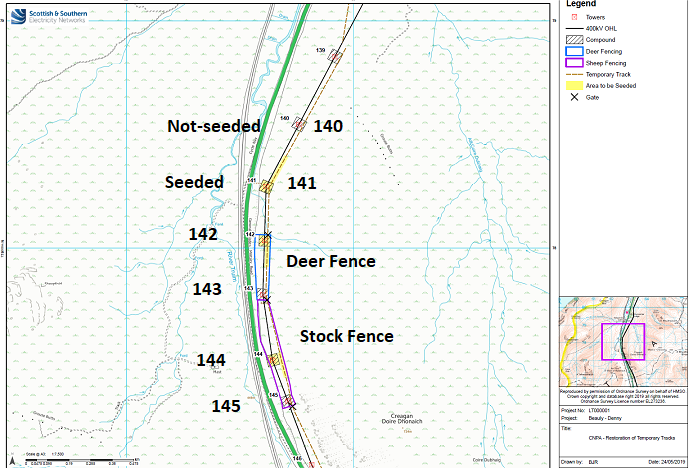
The story behind these trial areas is that following site visits in 2015 and 2016, the Cairngorms National Park Authority (the CNPA) became concerned that some of the restoration methods that had followed the construction were unlikely to be successful. Although only the Scottish Government has the power to enforce the planning conditions, which (still) require the Beauly Denny construction work to be fully restored (see here), the CNPA managed to persuade SSE and the main contractor, Balfour Beatty, to participate in a “voluntary” monitoring scheme which would run from 2016-21.
After SSE’s 2017 monitoring report found that “some of the least successful restoration of the temporary access tracks and tower bases has occurred over a stretch of the line between Dalnaspidal in the south and Dalwhinnie in the north”, the CNPA persuaded the multi-million pound company to part with a little more of their profits to re-seed the area around one tower and fence four others.

SSE’s assessment of the effectiveness of these interventions, if it ever took place, does not appear to be in the public realm.
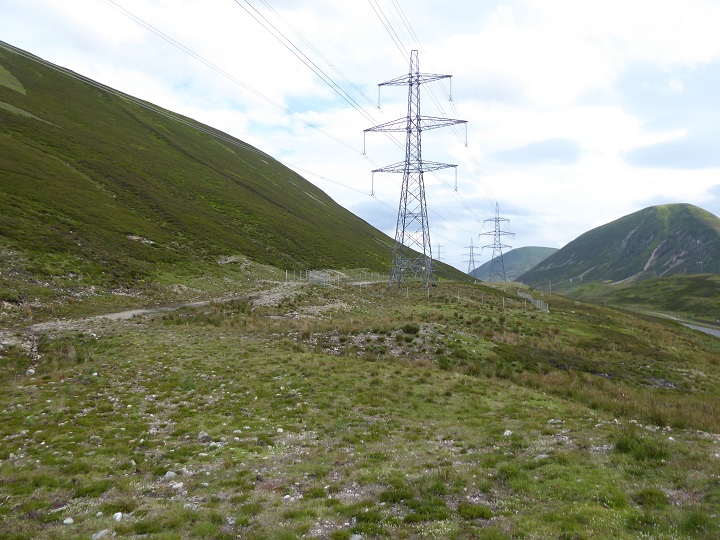
A report to the CNPA planning committee on 16th August 2019 explained the rationale, that “revegetation has been compounded by grazing of sheep and deer along some sections and by vehicle damage in others.” It was intended the new fencing would exclude deer and sheep which were “preferentially grazing new growth” and preventing vegetation recovery.
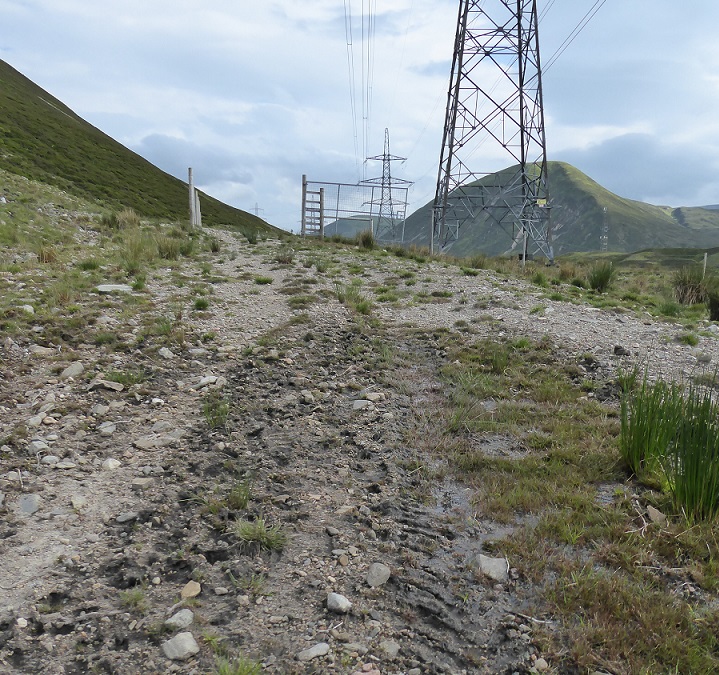
I was somewhat taken aback therefore to find that vehicles are still being driven into the deer-fenced area, that the gate had been left open and that judging by the profusion of footprints that grazing animals are making a beeline for it…….or perhaps sheep were herded here by an estate worker on an ATV?.
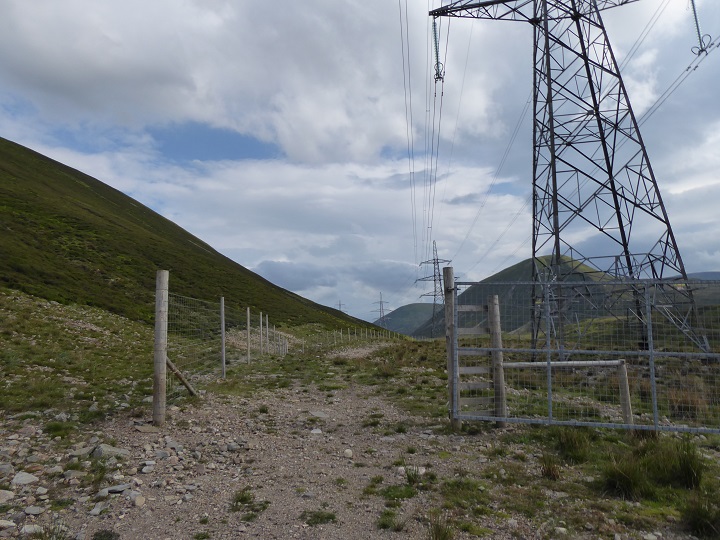
SSE are possibly unaware of that the gate is now being left open since they have failed to provide any monitoring reports to the CNPA since well before Covid – as I was told when I requested copies. It does appear, however, they were aware that the north Drumochter Estate might not co-operate with keeping deer and sheep out of the enclosure as their last monitoring report that is available refers to a site visit to check whether the gates were closed!
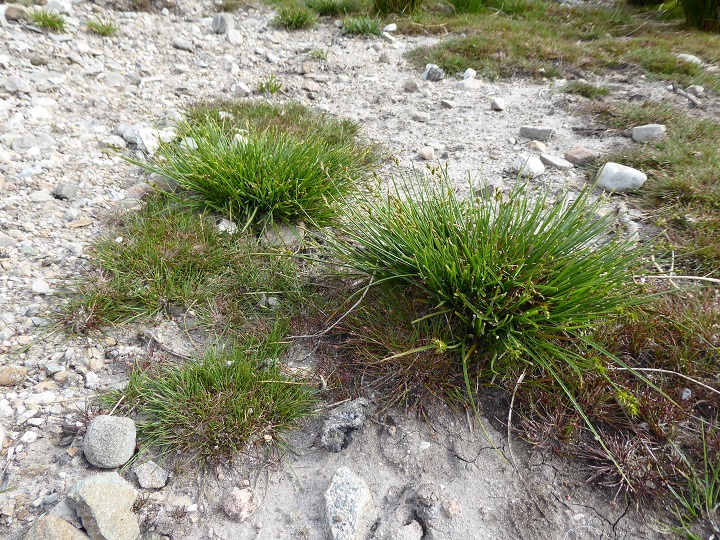
Inside the fenced area the impact of grazing was obvious. This is not a recent issue, it would appear the gate has been left open for some time, possibly several years.
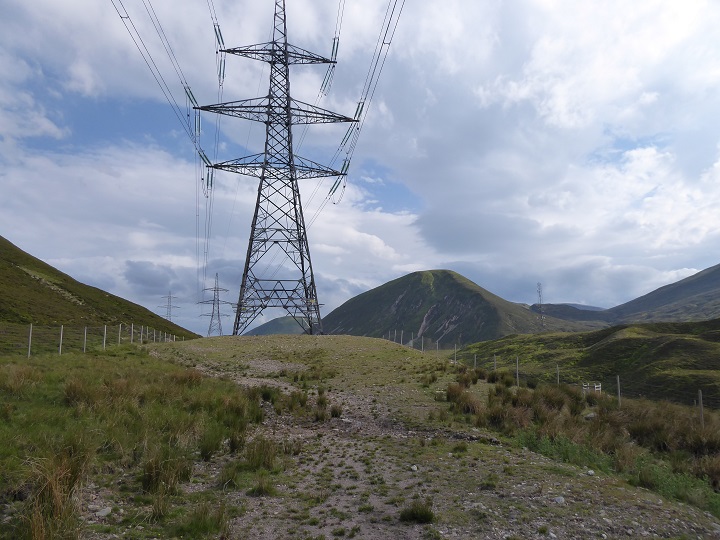
What SSE intend to do to restore the destruction they have caused now the voluntary monitoring period is complete is unclear. My suspicion is that if anyone in SSE is still responsible for this they will be hoping the issue will go away because they are not being given resources necessary to address the issues.
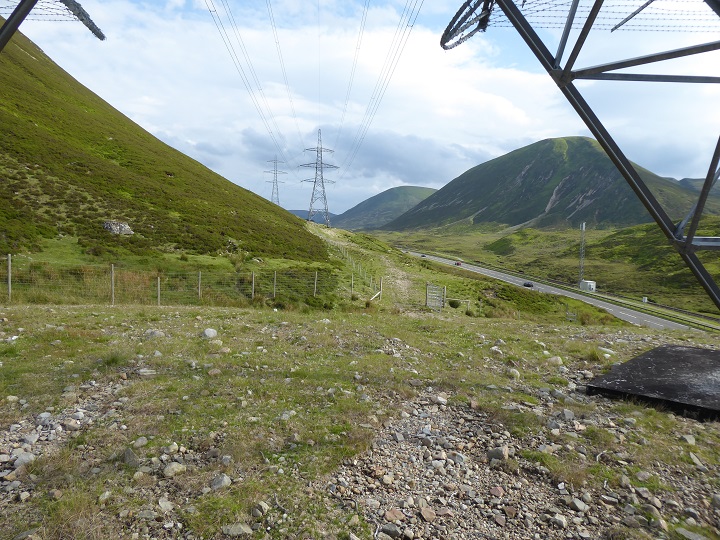
Just beyond tower 143 the area protected by deer fencing ends with another gate which opens onto a further strip of land which is only “protected” by stock fencing.
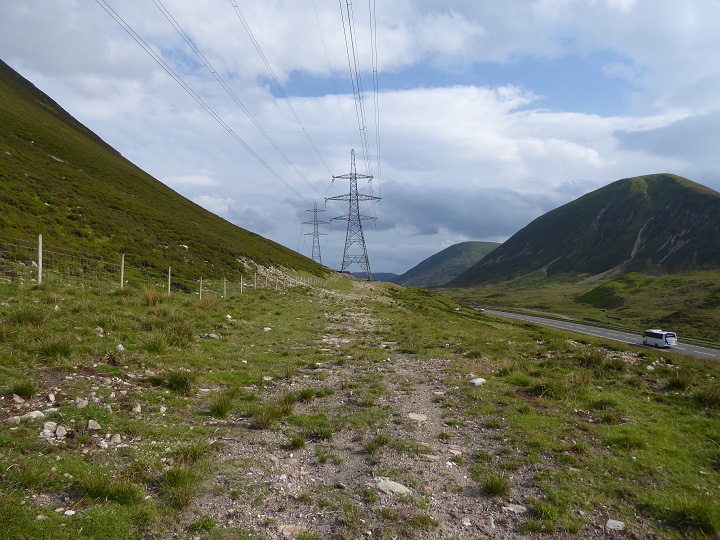
The theory behind the trial appears to have been that by comparing vegetation recovery in areas where only sheep were excluded with those where deer were too, that this would show which were causing the most problems. Much of any potential value of the trial has been undermined by the continued use of the Beauly Denny construction tracks by vehicles. Had the track been properly restored it would have been much harder and less tempting to drive along it on All Terrain Vehicles.
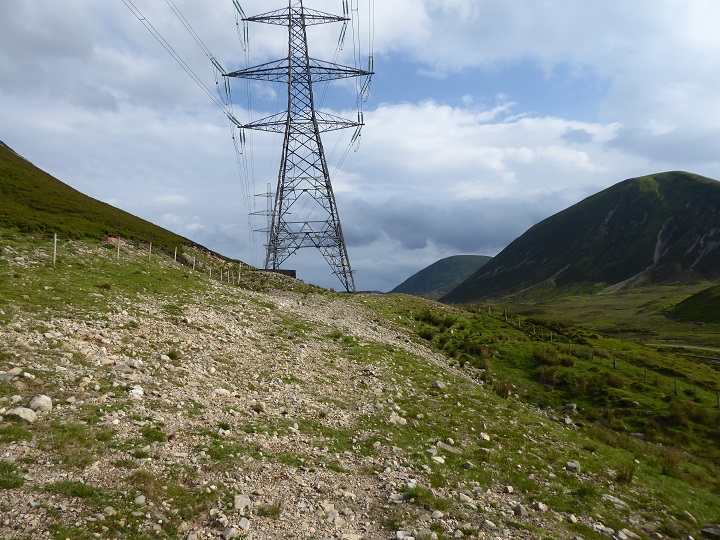
Only at the end of the flat section does ATV use become a little more challenging albeit still not enough to stop a skillful driver.
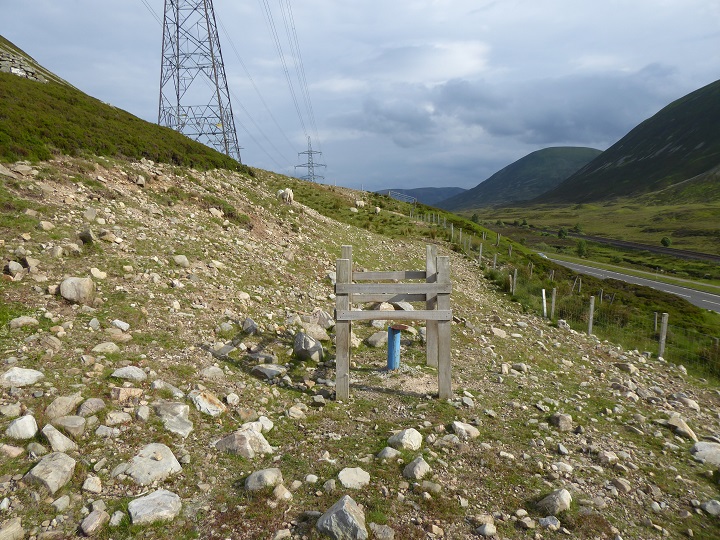
The ATV tracks disappeared approaching tower 145 but at the end and inside the stock fence was a small herd of sheep!
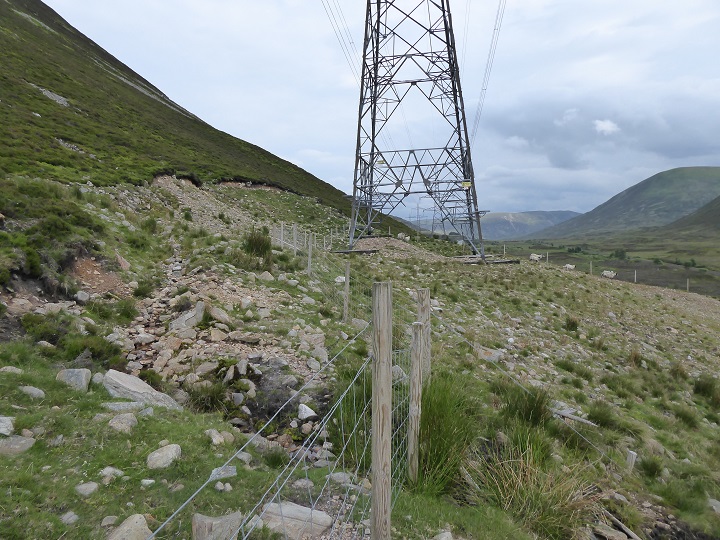 After my last post on the Beauly Denny Ron Greer commented that he had seen lots of sheep grazing along the landscape scar and this was impacting on the restoration. I then also saw a large herd on the section visible from the road but in the pouring rain, so I was unable to take any photos. Judging by the photographic evidence grazing pressure now appears as great inside the enclosure intended to exclude stock as out!
After my last post on the Beauly Denny Ron Greer commented that he had seen lots of sheep grazing along the landscape scar and this was impacting on the restoration. I then also saw a large herd on the section visible from the road but in the pouring rain, so I was unable to take any photos. Judging by the photographic evidence grazing pressure now appears as great inside the enclosure intended to exclude stock as out!
One of the planning conditions that should have applied to the Beauly Denny – and all other developments like hydro schemes that result in extensive ground disturbance – is that the developer should have to enter a legally binding agreement with the landowner to control grazing until vegetation has recovered. Instead, in the aftermath of the Beauly Denny construction the North Drumochter Estate has been provided with a new field for sheep courtesy of SSE.
Landowners quite lawfully exploit developments to provide them with new infrastructure, with little regard to the environmental impact. The “temporary” Beauly Denny construction track to the north of north Drumochter Lodge, part of which was floated over peat bog, is still there eight years later because that is what suits the estate (see here).
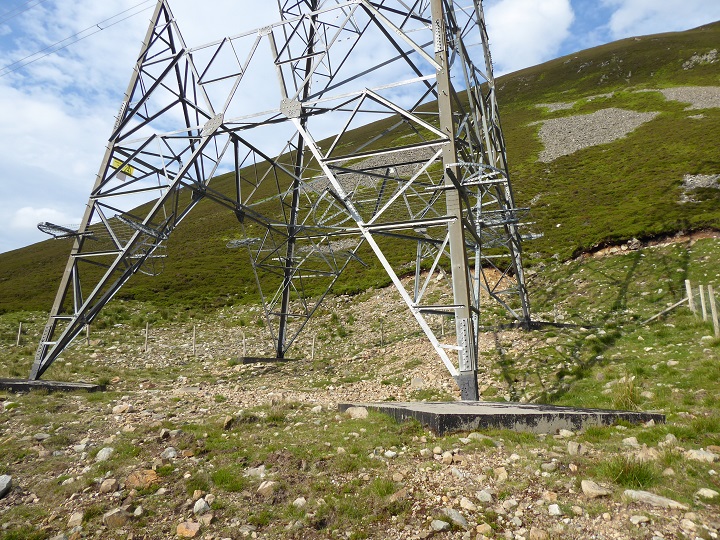
The exposed edge of peat along the edge of heather illustrates how the peaty soils that used to cover much of the area used to construct the powerline have been lost, releasing carbon into the atmosphere. What does this say about SSE’s attempts to re-invent itself as a green energy company?
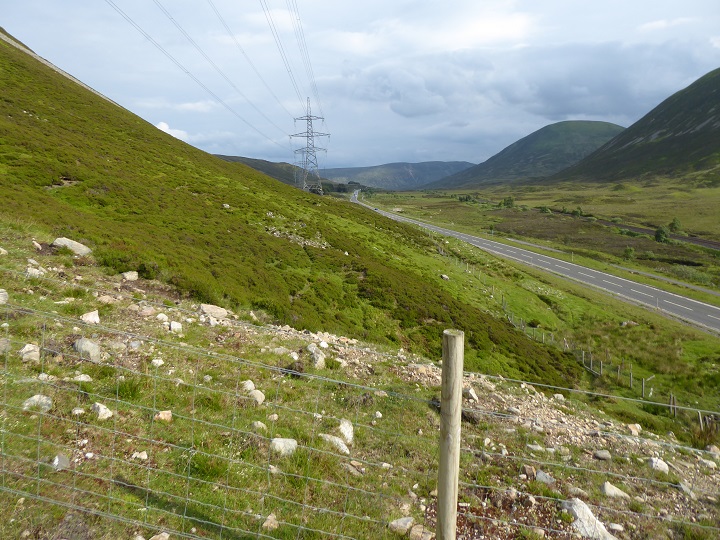
It came as a relief and a constrast to reach tower 145. There was no construction track between towers 145 and 146 since both were erected using tracks coming from the other direction. This view shows how the land might look if it were restored properly.
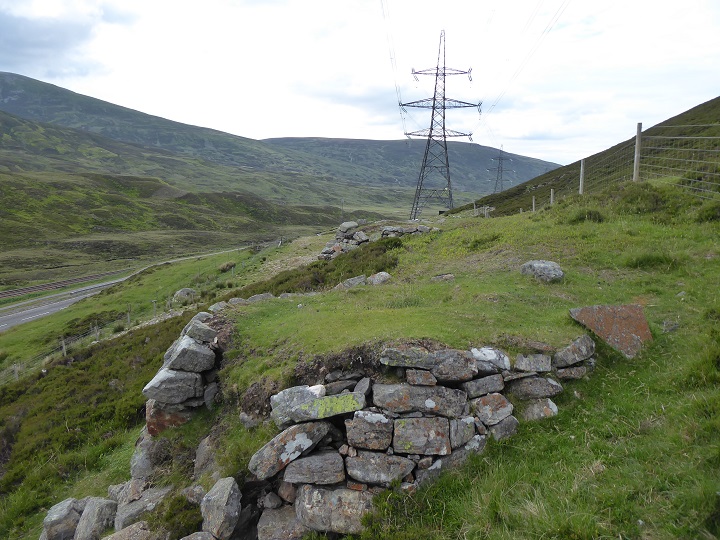
While the construction of the former powerline through the Drumochter appears to have caused far less damage than that of the Beauly Denny and used local materials, it also impacted on the natural environment, altering the drainage and bringing mineral soils to the surface. That helps explain why, years later, there is a sward of of bright green grass around this former footing. The photo helps illustrate that talk of restoring land to its original state after construction may be esay but it’s very difficult in practice. Still this looks far better than the Beauly Denny construction is ever likely to do as the construction footprint was much less.

Walking through the stock enclosure, I saw several rabbits and their burrows. Rabbits too help prevent moorland vegetation from recovering and appear to be flourishing. Part of the explanation may be an absence of predators, with the powerline making it very dangerous for raptors to hunt here.
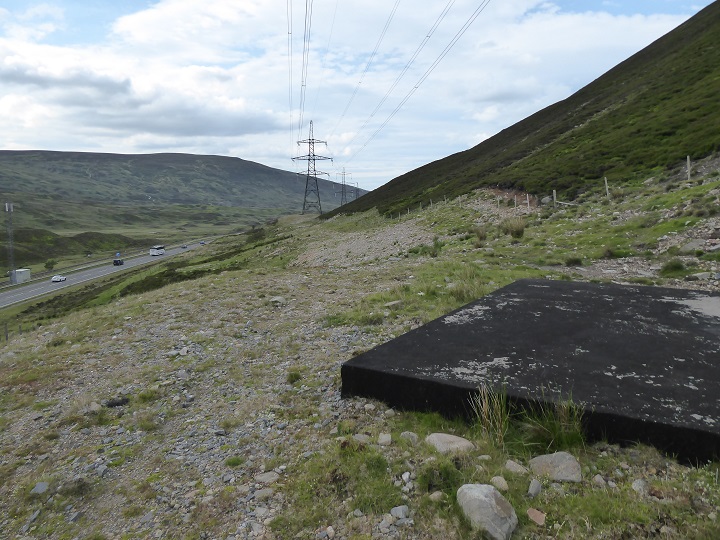
It is not just vegetation that is the issue. SSE and Balfour Beatty never restored the form of the land but instead left a benchline across the hillside, which has altered drainage patterns and is an invitation to estate staff to drive along it. While the CNPA has rightly in the past highlighted the failures to restore vegetation, they have never tried to address the more fundamental which is about the failure to restore the landscape. Only the Scottish Government has the power to do that.
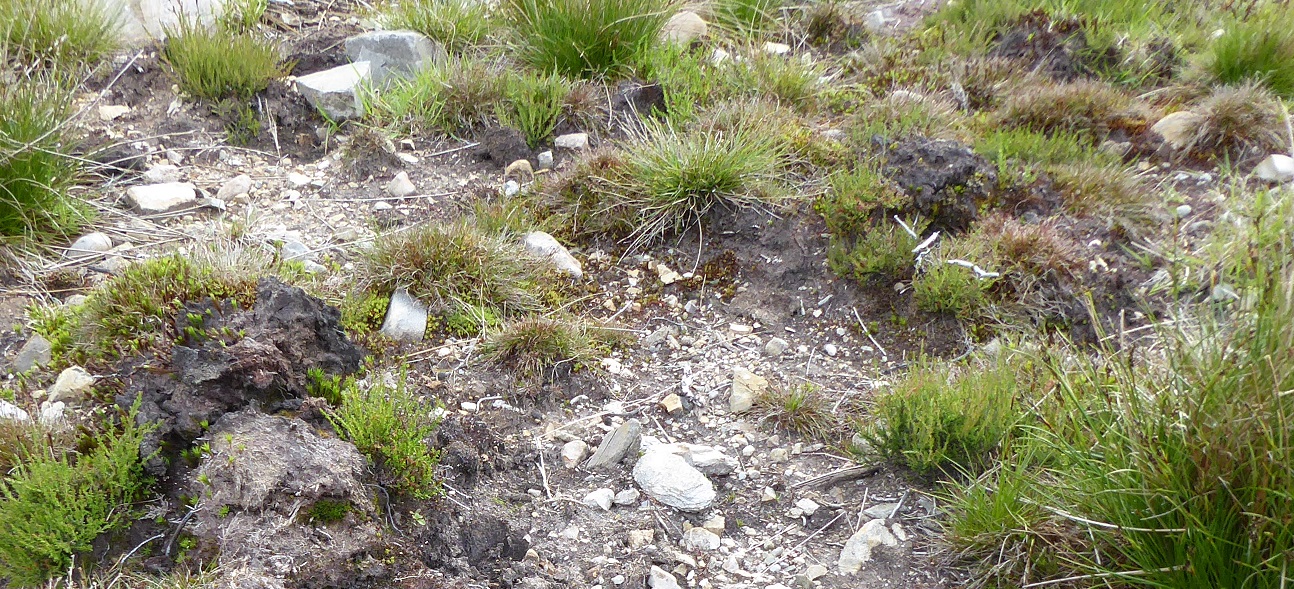
Instead of storing the shallow peat during the construction and replacing it once the landforms had been restored, SSE and Balfour Beatty allowed what little peat was left to be placed in clumps back on top of the disturbed ground. This has exposed the peat to the atmosphere and to oxidation and as a result there is significantly less peat now than there was five years ago and it is almost inevitable that any remaining peat will soon be lost.
SSE helpfully set out the basic restoration requirements for the Beauly Denny, which are otherwise hard to follow as contained in various different documents, in their first monitoring report:
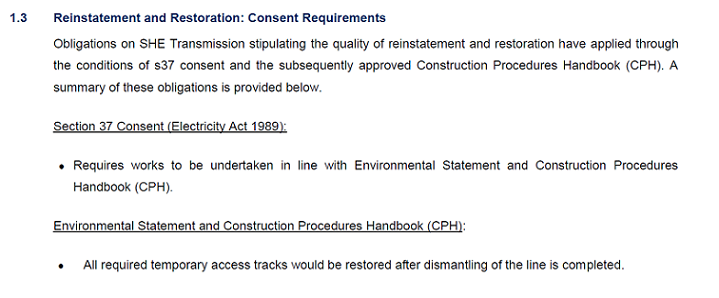

It is not clear how the voluntary monitoring arrangements negotiated between the CNPA and SSE/Balfour Beatty fit with the monitoring (last bullet point) and “necessary remedial actions” set out in the planning consent issued by the Scottish Government. But no-one has taken any action to ensure that the “ground [is] re-instated to a condition equivalent to that preceding construction”:
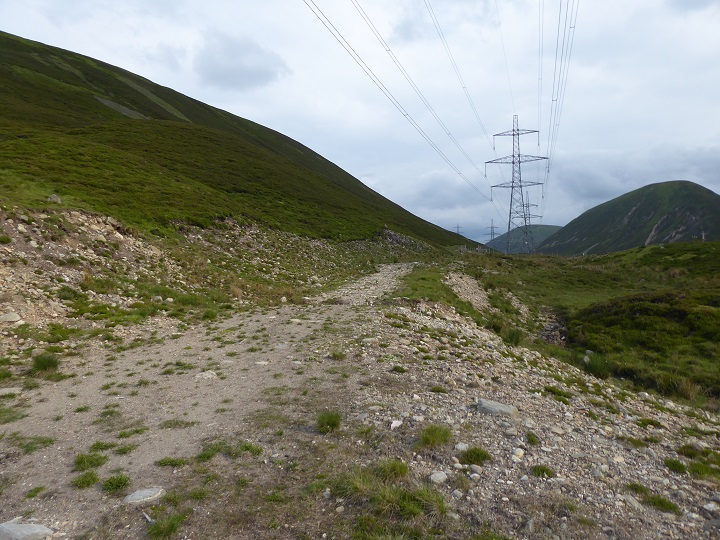
Large sections of the construction track within the trial restoration areas are still in situ, the landforms altered and disturbed areas now almost completely devoid of peat or heather. The vegetation is unlikely to change back to what is once was by natural regeneration – SSE’s preferred restoration methodology which happens to cost them nothing – until the minerals leach out of the new surface soil but even then the altered drainage may result in different vegetation.
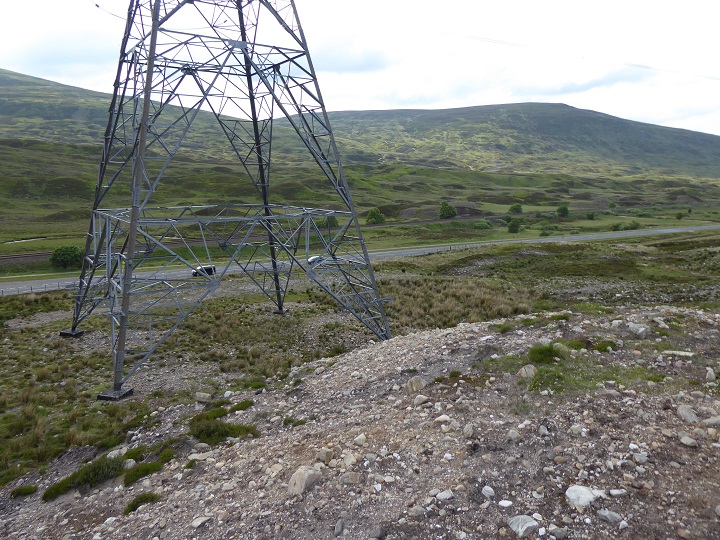
This area by tower 141 was supposed to have been re-seeded under the trial restoration project but there is little evidence of that now. Whatever seed was sown either failed or has been eaten!
I ran out of time to visit tower 140, the control, which was supposed to show what differences there were between areas that were re-seeded and fenced and those that weren’t but doing so would have been pointless. With open gates, all the fences serve to do is channel grazing animals along certain lines.
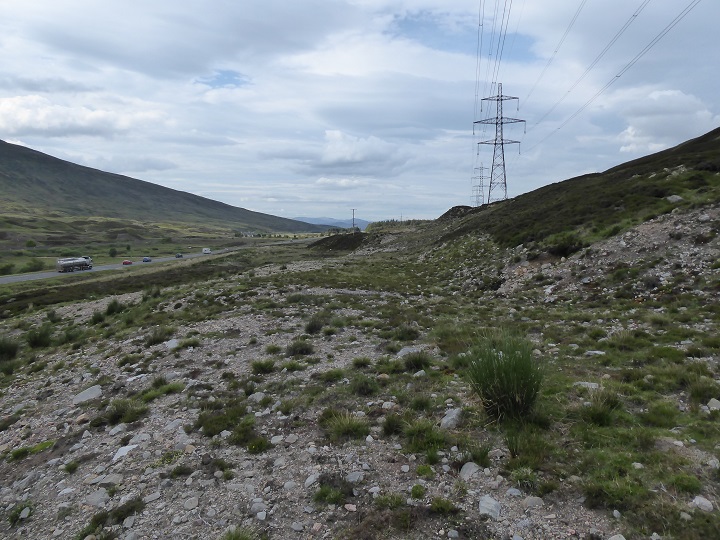
The section of the Beauly Denny powerline pictured in this post is all in the Drumochter Hills Special Area of Conservation (SAC) and supposedly one of Scotland’s most important protected areas. The EU (see here), Scottish Government and NatureScot – again supposedly Scotland’s lead agency for protecting nature but under whose aegis wildlife in Scotland has declined as never before – have all ignored SSE’s failure to abide by the plannng conditions for the Beauly Denny. None, it appears, are prepared to take on big business. It is perhaps time we described SACs as what they are, Shite Areas for Conservation.
Having contacted the CNPA I understand that they intend to follow up SSE for any further monitoring reports. Sadly this in unlikely to achieve anything and could be a recipe for more delays. What is wrong is obvious and the CNPA Board would be far better inviting Alistair Philip-Davies, Chief Executive of SSE, and the First Minister, Nicola Sturgeon, to make a site visit. But whether the CNPA can do anything more – other than go public – in the face of an unco-operative landowner and big business is unclear.
The appointment of Green MSP, Lorna Slater, as minister responsible for our Scotland’s SACs and National Parks might offer an opportunity to change this, though it says something about our system of government when what happens depends on the decisions of a few individuals. Nevertheless Lorna Slater could support the CNPA by calling on NatureScot to start using its statutory powers to stop the Drumochter SAC from being damaged further and on the Planning Minister to take enforcement action against SSE. Whether she is prepared to stand up to SSE, which is trampling over the public as well as the natural environment in its drive for profits, remains to be seen.
It would help if more members of the public and conservation organisations started to take a look for themselves about the landscape destruction along the gateway to north and then start speaking out

2 Comments on “When are SSE and the Scottish Government going to take responsibility for the damage at Drumochter?”